-
 Bitcoin
Bitcoin $77,174.4332
-6.66% -
 Ethereum
Ethereum $1,513.9694
-15.12% -
 Tether USDt
Tether USDt $0.9994
0.00% -
 XRP
XRP $1.7976
-13.35% -
 BNB
BNB $546.9143
-6.92% -
 USDC
USDC $1.0000
0.01% -
 Solana
Solana $102.1830
-13.15% -
 TRON
TRON $0.2263
-5.32% -
 Dogecoin
Dogecoin $0.1407
-13.87% -
 Cardano
Cardano $0.5506
-13.28% -
 UNUS SED LEO
UNUS SED LEO $8.8923
-1.36% -
 Toncoin
Toncoin $3.0651
-6.63% -
 Chainlink
Chainlink $10.9654
-12.57% -
 Stellar
Stellar $0.2233
-10.13% -
 Avalanche
Avalanche $15.7971
-7.68% -
 Shiba Inu
Shiba Inu $0.0...01102
-8.27% -
 Sui
Sui $1.8598
-12.98% -
 MANTRA
MANTRA $6.1562
-1.39% -
 Hedera
Hedera $0.1389
-10.82% -
 Polkadot
Polkadot $3.4511
-12.05% -
 Dai
Dai $1.0001
0.02% -
 Bitcoin Cash
Bitcoin Cash $265.0446
-9.69% -
 Litecoin
Litecoin $68.1930
-15.63% -
 Ethena USDe
Ethena USDe $0.9987
-0.03% -
 Bitget Token
Bitget Token $3.9224
-11.37% -
 Pi
Pi $0.5642
-11.92% -
 Monero
Monero $195.3244
-8.26% -
 Hyperliquid
Hyperliquid $10.5437
-7.47% -
 Uniswap
Uniswap $4.9997
-12.42% -
 OKB
OKB $49.8749
-7.33%
What does blockchain mean and how does it prevent data tampering?
Blockchain prevents data tampering through cryptographic hashing, distributed ledgers, consensus mechanisms, and immutable records, ensuring data integrity across various applications.
Apr 05, 2025 at 02:57 am
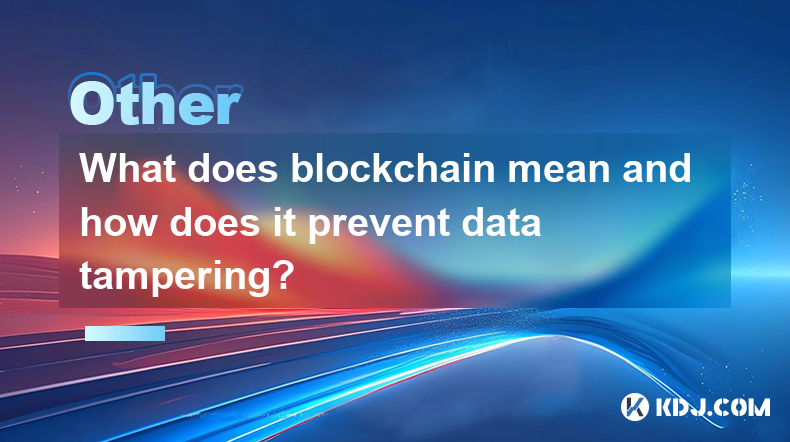
Blockchain technology is a revolutionary concept that has transformed the cryptocurrency landscape. At its core, blockchain is a decentralized and distributed digital ledger used to record transactions across numerous computers. This ensures that the recorded data is transparent and verifiable by anyone within the network. The concept of blockchain emerged as a solution to the double-spending problem in digital currencies, and it has since evolved into a robust technology applicable in various sectors.
The fundamental principle behind blockchain is that once data is recorded on the ledger, it becomes nearly impossible to alter. This immutability is achieved through a combination of cryptographic techniques and consensus mechanisms. Each block in the chain contains a list of transactions, and once a block is added to the chain, it is linked to the previous block through a cryptographic hash. This creates a chain of blocks, hence the name blockchain.
How Blockchain Prevents Data Tampering
Blockchain's ability to prevent data tampering is one of its most compelling features. The technology employs several mechanisms to ensure that once data is recorded, it remains unchanged. Here’s a detailed look at how blockchain achieves this:
Cryptographic Hashing: Each block in the blockchain contains a unique hash, which is a fixed-size string of characters generated by a hash function. This hash is created based on the data within the block, including the transactions and the hash of the previous block. If any data within the block is altered, the hash changes, making it evident that tampering has occurred.
Distributed Ledger: Blockchain operates on a distributed network of computers, known as nodes. Each node maintains a copy of the entire blockchain. This decentralization ensures that no single entity has control over the entire network, making it extremely difficult for malicious actors to manipulate the data.
Consensus Mechanisms: Blockchain networks use consensus mechanisms to validate and add new blocks to the chain. Common mechanisms include Proof of Work (PoW) and Proof of Stake (PoS). These mechanisms require network participants to agree on the validity of transactions before they are added to the blockchain, further enhancing security against tampering.
Immutable Records: Once a block is added to the blockchain, it is considered immutable. Altering a block would require changing all subsequent blocks and gaining consensus from the majority of the network, which is practically infeasible.
The Role of Cryptography in Blockchain Security
Cryptography plays a pivotal role in ensuring the security and integrity of blockchain networks. It is the backbone that enables the creation of secure and tamper-proof digital ledgers. Here are the key cryptographic elements that contribute to blockchain's security:
Public and Private Keys: Blockchain uses a system of public and private keys to secure transactions. The public key is used to receive cryptocurrencies, while the private key is used to sign transactions, ensuring that only the owner can authorize the transfer of funds.
Digital Signatures: Each transaction on the blockchain is signed with the sender's private key, creating a digital signature. This signature can be verified by anyone using the sender's public key, ensuring the authenticity and integrity of the transaction.
Hash Functions: As mentioned earlier, hash functions are used to create unique identifiers for each block. These functions are one-way, meaning it is computationally infeasible to reverse-engineer the original data from the hash. This ensures that any alteration to the data will result in a different hash, alerting the network to potential tampering.
Merkle Trees: Blockchain often uses Merkle trees to efficiently and securely verify the integrity of large datasets. A Merkle tree is a binary tree where each leaf node is a hash of a block of data, and each non-leaf node is a hash of its child nodes. This structure allows for quick and secure verification of the entire blockchain.
Consensus Mechanisms and Their Role in Preventing Tampering
Consensus mechanisms are crucial for maintaining the integrity of blockchain networks. They ensure that all participants agree on the state of the ledger, making it extremely difficult for malicious actors to tamper with the data. Here’s an in-depth look at the two most common consensus mechanisms:
Proof of Work (PoW): PoW is used by networks like Bitcoin. In this mechanism, miners compete to solve complex mathematical puzzles to validate transactions and add new blocks to the blockchain. The first miner to solve the puzzle gets to add the block and is rewarded with cryptocurrency. This process is energy-intensive but highly secure, as altering a block would require re-mining all subsequent blocks, which is practically impossible.
Proof of Stake (PoS): PoS is an alternative to PoW, used by networks like Ethereum 2.0. In PoS, validators are chosen to create new blocks based on the number of coins they hold and are willing to "stake" as collateral. This method is less energy-intensive than PoW and still provides robust security against tampering, as altering a block would require controlling a majority of the staked coins, which is economically unfeasible.
Real-World Applications of Blockchain's Tamper-Proof Nature
The tamper-proof nature of blockchain has led to its adoption in various industries beyond cryptocurrencies. Here are some real-world applications that leverage blockchain's ability to prevent data tampering:
Supply Chain Management: Blockchain can be used to create transparent and immutable records of product journeys from manufacturer to consumer. This helps in verifying the authenticity and origin of goods, reducing the risk of fraud and counterfeit products.
Healthcare: In healthcare, blockchain can securely store patient records, ensuring that medical data is tamper-proof and accessible only to authorized personnel. This enhances patient privacy and data integrity.
Voting Systems: Blockchain can be used to create secure and transparent voting systems, where votes are recorded on an immutable ledger, ensuring the integrity of the electoral process and reducing the risk of fraud.
Financial Services: In the financial sector, blockchain can be used for secure and transparent record-keeping of transactions, reducing the risk of fraud and enhancing trust among parties.
Challenges and Limitations of Blockchain in Preventing Data Tampering
While blockchain offers robust protection against data tampering, it is not without its challenges and limitations. Understanding these can provide a more comprehensive view of the technology:
Scalability Issues: As the number of transactions on a blockchain increases, the network can become slower and more expensive to operate. This scalability challenge can make it difficult to implement blockchain solutions in high-volume environments.
Energy Consumption: Proof of Work consensus mechanisms, like those used by Bitcoin, require significant computational power and energy. This high energy consumption can be a barrier to widespread adoption and raises environmental concerns.
51% Attacks: In a blockchain network, if a single entity gains control of more than 50% of the network's mining or staking power, they could potentially alter the blockchain. While this is difficult to achieve, it remains a theoretical vulnerability.
Regulatory Challenges: The decentralized nature of blockchain can pose challenges for regulatory compliance, as it can be difficult to enforce laws and regulations across a global, distributed network.
Future Developments in Blockchain Security
The field of blockchain technology is continuously evolving, with ongoing research and development aimed at enhancing its security and efficiency. Here are some future developments that could further strengthen blockchain's ability to prevent data tampering:
Quantum-Resistant Cryptography: As quantum computing advances, there is a growing need for quantum-resistant cryptographic algorithms. Researchers are working on developing such algorithms to ensure that blockchain remains secure against future quantum threats.
Layer 2 Solutions: Layer 2 scaling solutions, such as the Lightning Network for Bitcoin, aim to increase transaction throughput while maintaining the security of the underlying blockchain. These solutions can help address scalability issues without compromising on tamper-proofing.
Interoperability Protocols: As different blockchain networks emerge, there is a need for interoperability protocols that allow these networks to communicate and share data securely. This can enhance the overall security and resilience of the blockchain ecosystem.
Advanced Consensus Mechanisms: Researchers are exploring new consensus mechanisms that could offer better security and efficiency than current methods. For example, hybrid models that combine elements of PoW and PoS are being developed to balance security and energy efficiency.
Common Questions Related to Blockchain and Data Tampering
Q: What is the main purpose of blockchain technology?
A: The main purpose of blockchain technology is to provide a secure, transparent, and decentralized way to record and verify transactions. It aims to eliminate the need for intermediaries and enhance trust among participants by ensuring that data cannot be tampered with once it is recorded on the ledger.
Q: How does blockchain ensure data integrity?
A: Blockchain ensures data integrity through cryptographic hashing, a distributed ledger, consensus mechanisms, and immutable records. These elements work together to create a tamper-proof system where any attempt to alter data would be immediately detected and rejected by the network.
Q: Can blockchain data be hacked?
A: While blockchain is highly secure, it is not entirely immune to hacking. The most significant risk is a 51% attack, where an entity gains control of the majority of the network's mining or staking power. However, such attacks are extremely difficult to execute and require significant resources.
Q: What are the benefits of using blockchain in supply chain management?
A: The benefits of using blockchain in supply chain management include enhanced transparency, traceability, and security. Blockchain can create an immutable record of a product's journey, reducing the risk of fraud and counterfeit goods, and improving trust among all parties involved in the supply chain.
Q: How does blockchain impact the financial sector?
A: Blockchain impacts the financial sector by providing secure and transparent record-keeping of transactions, reducing the risk of fraud, and enhancing trust among parties. It can also streamline processes, reduce costs, and enable faster and more efficient cross-border transactions.
Q: What are the future prospects for blockchain technology?
A: The future prospects for blockchain technology are promising, with ongoing developments in quantum-resistant cryptography, layer 2 solutions, interoperability protocols, and advanced consensus mechanisms. These advancements could further enhance blockchain's security, efficiency, and applicability across various industries.
Disclaimer:info@kdj.com
The information provided is not trading advice. kdj.com does not assume any responsibility for any investments made based on the information provided in this article. Cryptocurrencies are highly volatile and it is highly recommended that you invest with caution after thorough research!
If you believe that the content used on this website infringes your copyright, please contact us immediately (info@kdj.com) and we will delete it promptly.
- Ethereum and Solana Prices Collapsed Monday Morning as President Trump's Sweeping New Tariffs Sparked a Global Market Selloff
- 2025-04-07 20:35:12
- GameStop Corp. (NYSE: GME) Announces Bitcoin Purchase Plans, Sparking Stock Rally
- 2025-04-07 20:35:12
- New Plan to Stabilize Pi Coin Price Gains Attention
- 2025-04-07 20:30:11
- Who hasn't dreamed of finding the next 1000x crypto? Imagine turning a small investment into a huge fortune overnight.
- 2025-04-07 20:30:11
- U.S. President Donald Trump’s sweeping reciprocal tariffs have triggered fresh panic across global financial markets.
- 2025-04-07 20:25:12
- Solana (SOL) Plunges Below $100, Memecoin Mania Cools
- 2025-04-07 20:25:12
Related knowledge

Is the ranking of Chinese blockchain apps real and reliable?
Apr 04,2025 at 09:01pm
The ranking of Chinese blockchain apps has become a topic of interest for many in the cryptocurrency community, as it provides insights into the popularity and adoption of blockchain technology within China. However, the reliability and authenticity of these rankings are often questioned. This article aims to delve into the factors that influence these ...
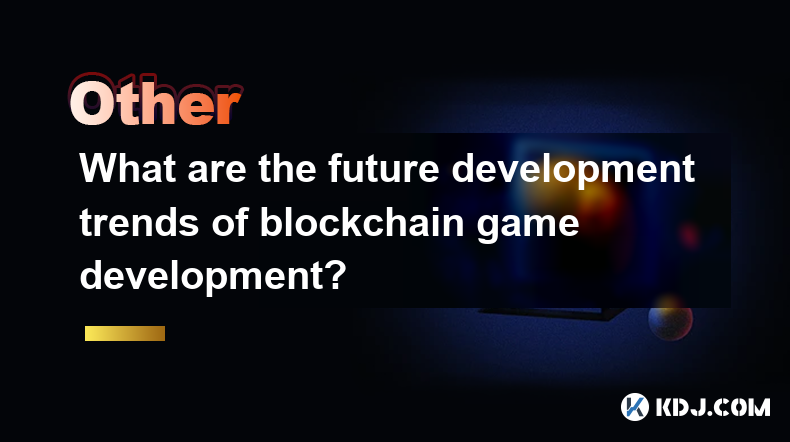
What are the future development trends of blockchain game development?
Apr 03,2025 at 05:00am
Blockchain technology has revolutionized various industries, and gaming is no exception. As we look to the future, several trends are set to shape the development of blockchain games. These trends not only promise to enhance the gaming experience but also to integrate blockchain technology more seamlessly into the gaming ecosystem. Let's explore these t...

What are the high-return opportunities for blockchain investments?
Apr 05,2025 at 02:35pm
Blockchain technology has revolutionized the financial world, offering numerous high-return investment opportunities. These opportunities span various sectors within the cryptocurrency ecosystem, including cryptocurrencies, decentralized finance (DeFi), non-fungible tokens (NFTs), and blockchain startups. Each of these areas presents unique risks and re...
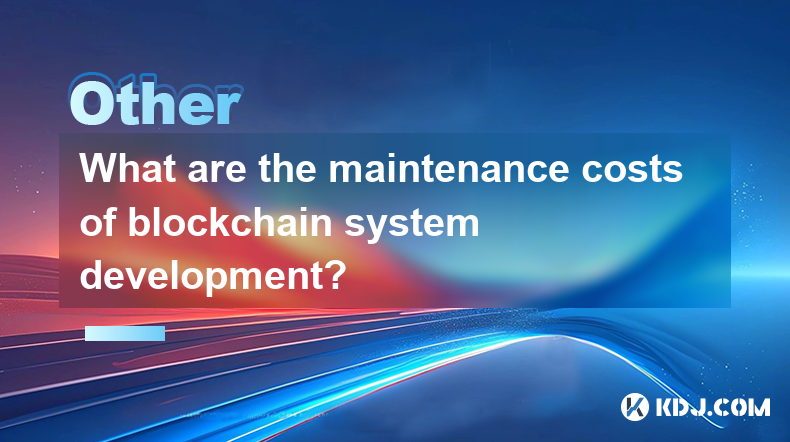
What are the maintenance costs of blockchain system development?
Apr 03,2025 at 06:07pm
The maintenance costs of blockchain system development are multifaceted and depend on various factors. These costs can include technical maintenance, security updates, infrastructure expenses, and personnel costs. Understanding these elements is crucial for anyone planning to develop or maintain a blockchain system. Technical MaintenanceTechnical mainte...
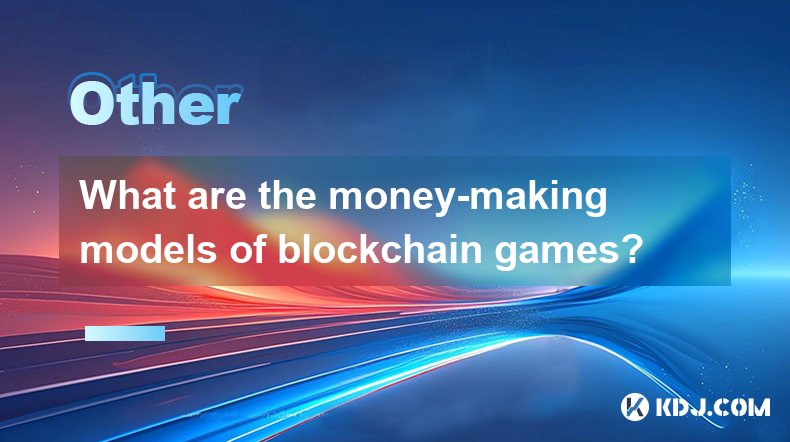
What are the money-making models of blockchain games?
Apr 04,2025 at 02:00pm
Blockchain games have emerged as a revolutionary way for players to earn real money while enjoying their favorite pastime. These games leverage the power of blockchain technology to create unique money-making models that benefit both the players and the developers. In this article, we will explore the various money-making models of blockchain games and ...
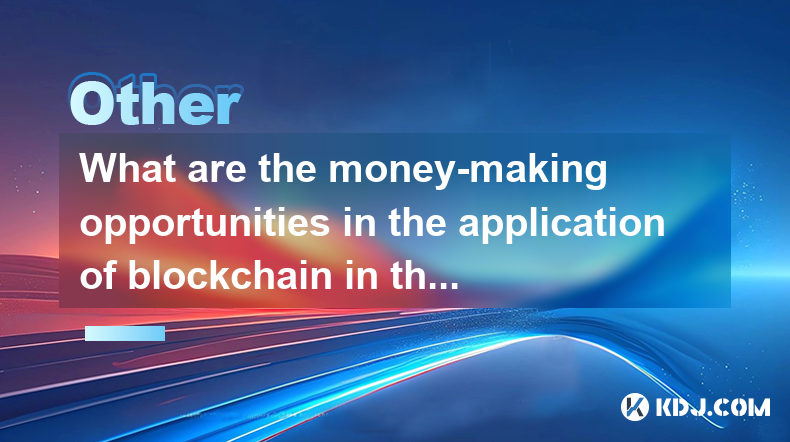
What are the money-making opportunities in the application of blockchain in the field of Internet of Things?
Apr 05,2025 at 10:35pm
The integration of blockchain technology with the Internet of Things (IoT) presents numerous money-making opportunities. Blockchain, with its decentralized and secure nature, can revolutionize how IoT devices interact, manage data, and conduct transactions. This article will explore various avenues where entrepreneurs, developers, and investors can capi...

Is the ranking of Chinese blockchain apps real and reliable?
Apr 04,2025 at 09:01pm
The ranking of Chinese blockchain apps has become a topic of interest for many in the cryptocurrency community, as it provides insights into the popularity and adoption of blockchain technology within China. However, the reliability and authenticity of these rankings are often questioned. This article aims to delve into the factors that influence these ...

What are the future development trends of blockchain game development?
Apr 03,2025 at 05:00am
Blockchain technology has revolutionized various industries, and gaming is no exception. As we look to the future, several trends are set to shape the development of blockchain games. These trends not only promise to enhance the gaming experience but also to integrate blockchain technology more seamlessly into the gaming ecosystem. Let's explore these t...

What are the high-return opportunities for blockchain investments?
Apr 05,2025 at 02:35pm
Blockchain technology has revolutionized the financial world, offering numerous high-return investment opportunities. These opportunities span various sectors within the cryptocurrency ecosystem, including cryptocurrencies, decentralized finance (DeFi), non-fungible tokens (NFTs), and blockchain startups. Each of these areas presents unique risks and re...

What are the maintenance costs of blockchain system development?
Apr 03,2025 at 06:07pm
The maintenance costs of blockchain system development are multifaceted and depend on various factors. These costs can include technical maintenance, security updates, infrastructure expenses, and personnel costs. Understanding these elements is crucial for anyone planning to develop or maintain a blockchain system. Technical MaintenanceTechnical mainte...

What are the money-making models of blockchain games?
Apr 04,2025 at 02:00pm
Blockchain games have emerged as a revolutionary way for players to earn real money while enjoying their favorite pastime. These games leverage the power of blockchain technology to create unique money-making models that benefit both the players and the developers. In this article, we will explore the various money-making models of blockchain games and ...

What are the money-making opportunities in the application of blockchain in the field of Internet of Things?
Apr 05,2025 at 10:35pm
The integration of blockchain technology with the Internet of Things (IoT) presents numerous money-making opportunities. Blockchain, with its decentralized and secure nature, can revolutionize how IoT devices interact, manage data, and conduct transactions. This article will explore various avenues where entrepreneurs, developers, and investors can capi...
See all articles





















































































